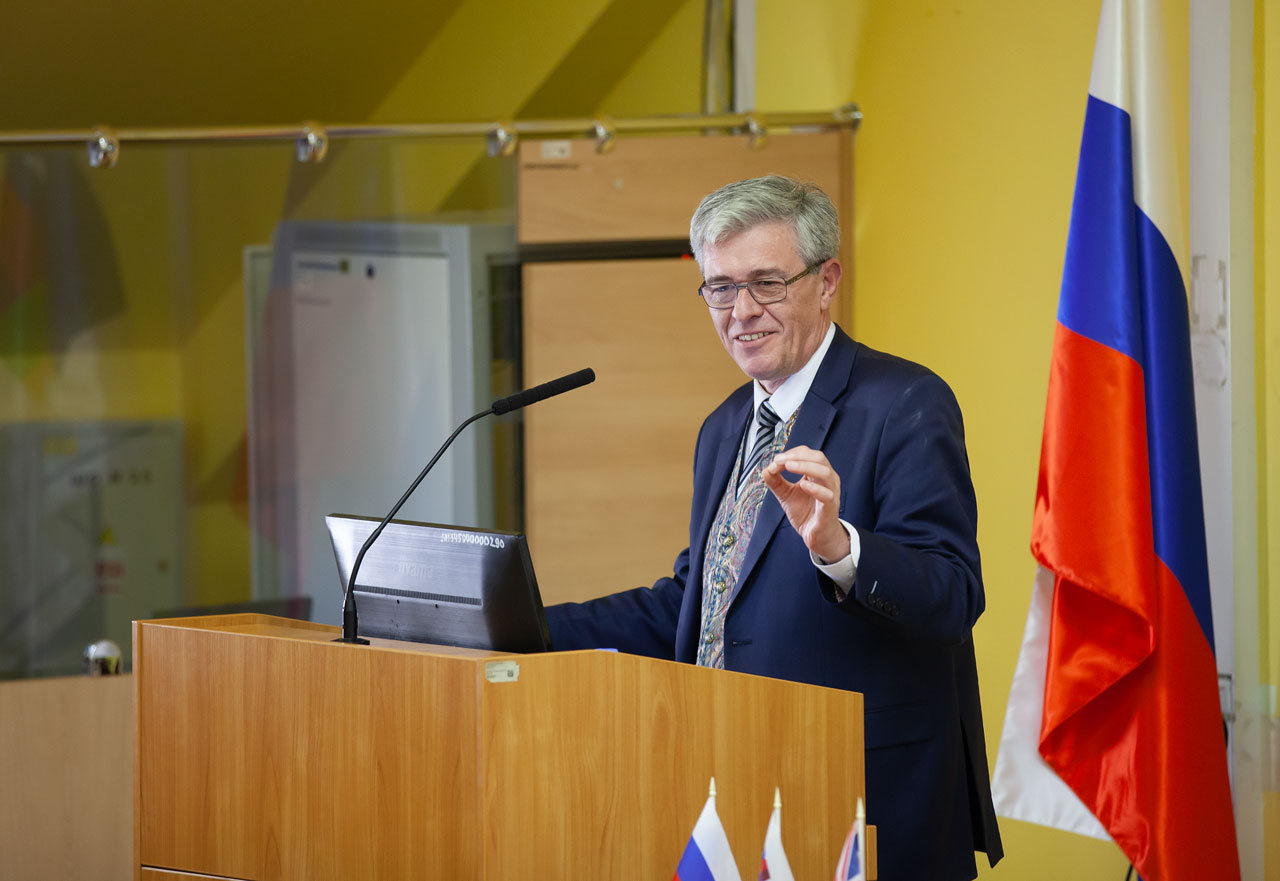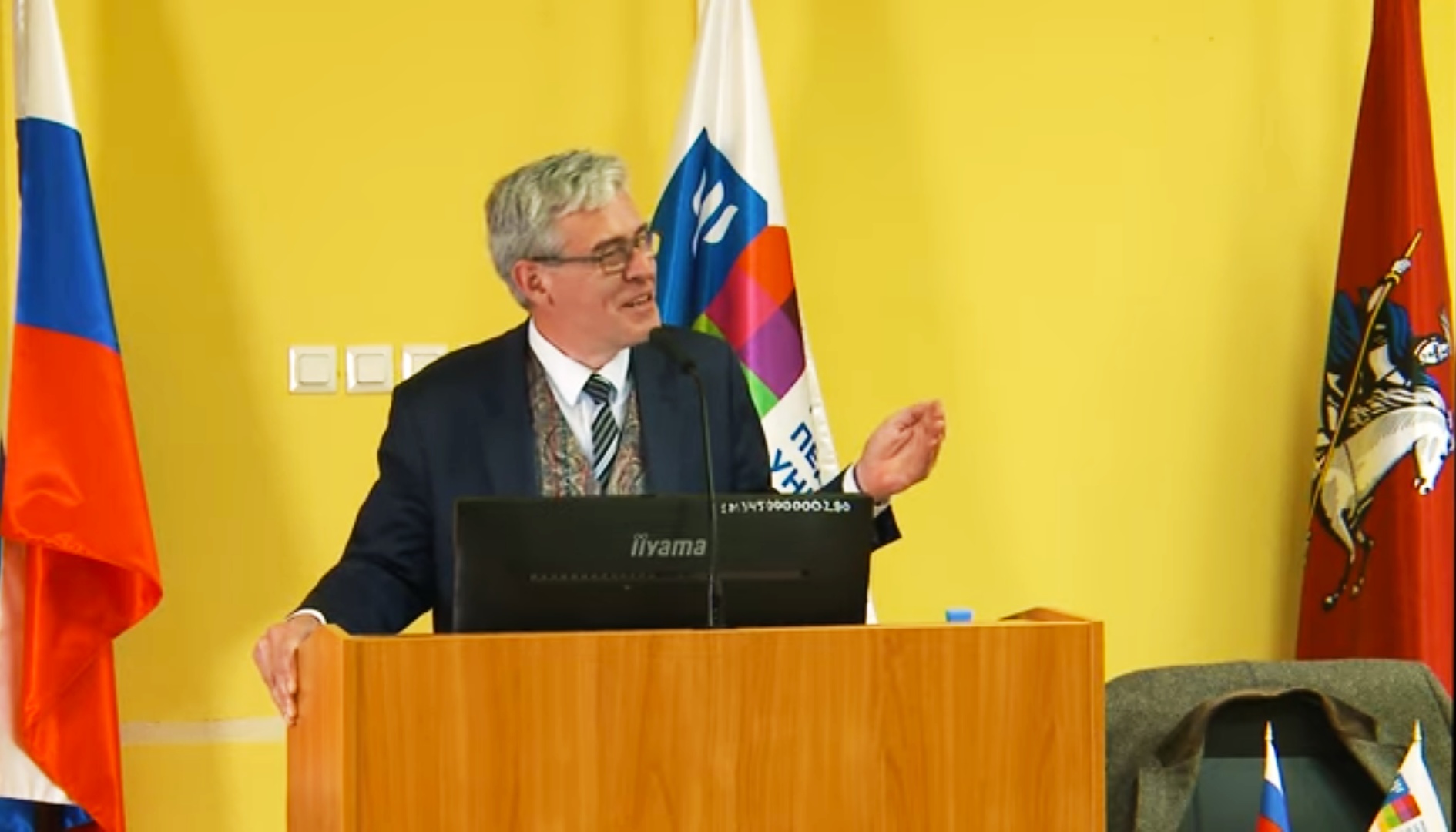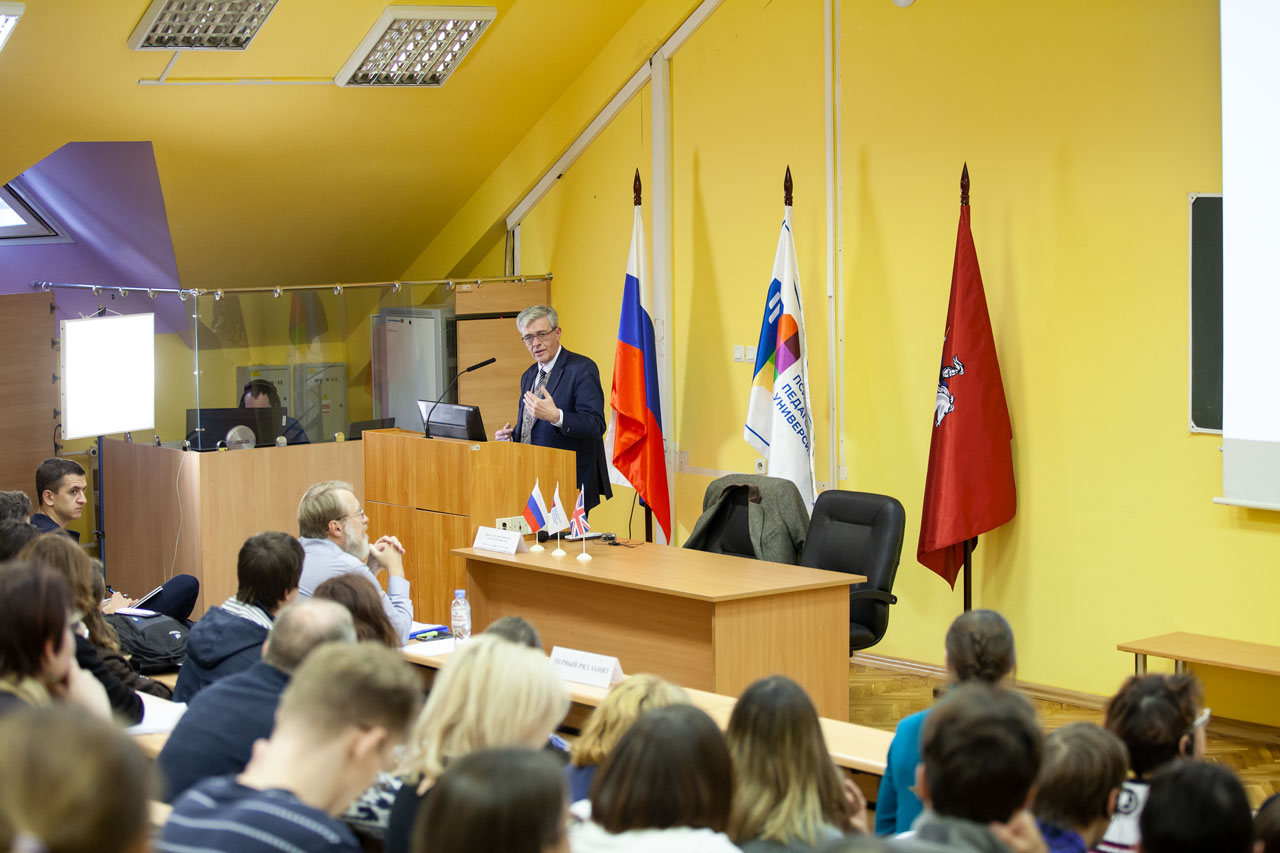23 сентября 2019 года в МГППУ состоялась открытая лекция КАРЛА ФРИСТОНА - британского нейробиолога, изобретателя статистической параметрической разметки (SPM) и воксельной морфометрии (VBM), члена Британской Медицинской Академии (1999), члена Королевского научного общества (2006), научного директора Лаборатории функциональных изображений при Университетском колледже Лондона, профессора Лондонского университета. Карл Фристон получил широкую известность и признание в научных кругах за формулировку ряда основополагающих теоретических представлений, таких как принцип минимизации свободной энергии, гипотеза «Байесовского мозга» и др.
В 2016 году Карл Фристон занял № 1 в списке самых влиятельных учёных нейрофизиологов. Хирш-индекс Карла Фристона составляет 174 согласно данным WebOfScience и 220 согласно данным GoogleScholar.
Тема лекции: Активный вывод и глубокие временные модели
Аннотация: В лекции рассказано о глубоких временных моделях (deep temporal models), основанных на Марковских процессах принятия решений. Эти представления базируются на выдвинутой ранее теории активного вывода (active inference – активный сбор информации мозгом для проверки и обновления предсказаний об окружающем мире) и используются для симуляции как поведения, так и электрофизиологических данных – в рамках иерархических порождающих моделей переходов между дискретными состояниями. Инверсия таких моделей (выявление скрытых причин путем анализа следствий) базируется на вложенных последовательных выводах (предсказаниях), организованных таким образом, что изменение состояния на более высоком иерархическом уровне влечет за собой множественные изменения состояния на нижележащем уровне. Глубокая структурированность этих моделей во временном аспекте означает, что свидетельства накапливаются в различных временных масштабах, позволяя делать выводы в нарративах (то есть, в последовательностях сцен, упорядоченных во времени) – как это, например, можно наблюдать при чтении текстов. Мы иллюстрируем такое поведение в контексте представлений об обновлении «байесовских сетей доверия» – и соответствующих теорий нейронных процессов – для объяснения феномена поиска и накопления информации, направленного на разрешение неопределенностей (epistemic foraging), наблюдаемого при чтении. Компьютерные симуляционные модели, имитирующие такие процессы, позволяют воспроизвести экспериментальные данные по перисаккадической нейронной активности и локальным потенциалам поля; в частности, это относится к исследованиям накопления свидетельств и к регистрации активности нейронов места. Наконец, мы используем глубокую структуру этих моделей для компьютерной симуляции ответов на локальные (например, тип шрифта) и глобальные (например, семантические) нарушения упорядоченности в последовательностях стимулов, позволяющей воспроизвести такие эффекты, как негативность рассогласования и потенциал P300 соответственно.
Видео лекции без перевода - Prof. Karl J. Friston. "Active inference and deep temporal models".
В рамках своего визита Карл Фристон также провел серию мастер-классов на английском языке:
24 сентября
Lecture 1: I am therefore I think
14:00-17:00
аудитория 311 (МГППУ, Сретенка 29)
25 сентября
Lecture 2: Active inference and belief propagation in the brain
14:00-17:00
аудитория 311 (МГППУ, Сретенка 29)
26 сентября
Lecture 3: Active inference and artificial curiosity.
15:00 – 18:00
Департамент психологии НИУ ВШЭ,
Армянский переулок 4, корп.2,
аудитория 418, https://social.hse.ru/psy/kontakty
О мастер-классах:
A masterclass in the free energy principle
This workshop comprises three lectures covering the various aspects of the free energy principle (delivered by its principal architect – Karl Friston); namely, biological self organisation in dynamical systems like the brain and how this leads to predictive coding and embodied (active) inference. The second lecture deals with equivalent formulations of active inference for models of the world that can be described in terms of discrete states (and time steps). The final lecture will consider recent advances in Bayesian model selection and averaging in the brain that provide a formalism for artificial curiosity and insight.
24.09.2019
Lecture 1: I am therefore I think.
Abstract: This overview of the free energy principle offers an account of embodied exchange with the world that associates conscious operations with actively inferring the causes of our sensations. Its agenda is to link formal (mathematical) descriptions of dynamical systems to a description of perception in terms of beliefs and goals. The argument has two parts: the first calls on the lawful dynamics of any (weakly mixing) ergodic system – from a single cell organism to a human brain. These lawful dynamics suggest that (internal) states can be interpreted as modelling or predicting the (external) causes of sensory fluctuations. In other words, if a system exists, its internal states must encode probabilistic beliefs about external states. Heuristically, this means that if I exist (am) then I must have beliefs (think). The second part of the argument is that the only tenable beliefs I can entertain about myself are that I exist. This may seem rather obvious; however, if we associate existing with ergodicity, then (ergodic) systems that exist by predicting external states can only possess prior beliefs that their environment is predictable. It transpires that this is equivalent to believing that the world – and the way it is sampled – will resolve uncertainty about the causes of sensations. We will conclude by looking at the epistemic behaviour that emerges under these beliefs, using simulations of active inference.
25.09.2019
Lecture 2: Active inference and belief propagation in the brain.
Abstract: This presentation considers deep temporal models in the brain. It builds on previous formulations of active inference to simulate behaviour and electrophysiological responses under deep (hierarchical) generative models of discrete state transitions. The deeply structured temporal aspect of these models means that evidence is accumulated over distinct temporal scales, enabling inferences about narratives (i.e., temporal scenes). Se illustrate this behaviour in terms of Bayesian belief updating – and associated neuronal processes – to reproduce the epistemic foraging seen in reading. These simulations reproduce these sort of perisaccadic delay period activity and local field potentials seen empirically; including evidence accumulation and place cell activity. Finally, we exploit the deep structure of these models to simulate responses to local (e.g., font type) and global (e.g., semantic) violations; reproducing mismatch negativity and P300 responses respectively. These simulations are presented as an example of how to use basic principles to constrain our understanding of system architectures in the brain – and the functional imperatives that may apply to neuronal networks.
26.09.2019
Lecture 3: Active inference and artificial curiosity.
Abstract: This talk offers a formal account of insight and learning in terms of active (Bayesian) inference. It deals with the dual problem of inferring states of the world and learning its statistical structure. In contrast to current trends in machine learning (e.g., deep learning), we focus on how agents learn from a small number of ambiguous outcomes to form insight. I will simulations of abstract rule-learning and approximate Bayesian inference to show that minimising (expected) free energy leads to active sampling of novel contingencies. This epistemic, curiosity-directed behaviour closes ‘explanatory gaps’ in knowledge about the causal structure of the world; thereby reducing ignorance, in addition to resolving uncertainty about states of the known world. We then move from inference to model selection or structure learning to show how abductive processes emerge when agents test plausible hypotheses about symmetries in their generative models of the world. The ensuing Bayesian model reduction evokes mechanisms associated with sleep and has all the hallmarks of ‘aha moments’.
Статья о деятельности Карла Фристона: https://habr.com/ru/post/432304/
Карл Фристон рассказывает о принципе свободной энергии:


